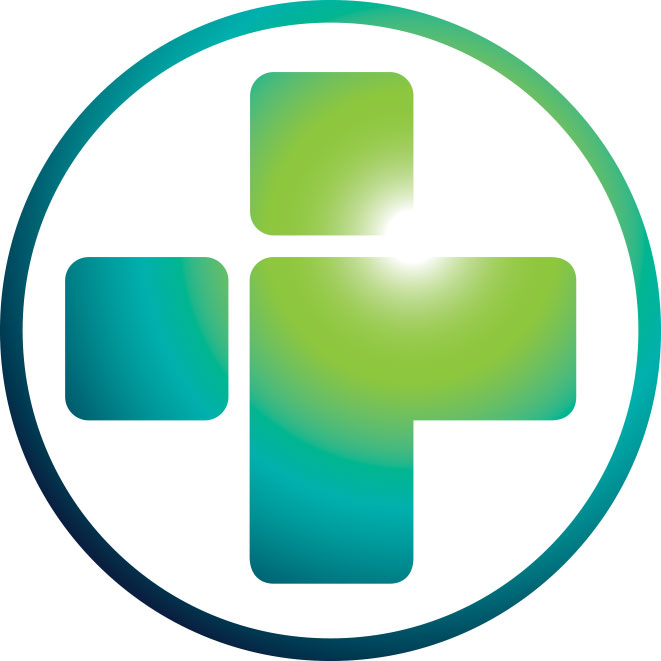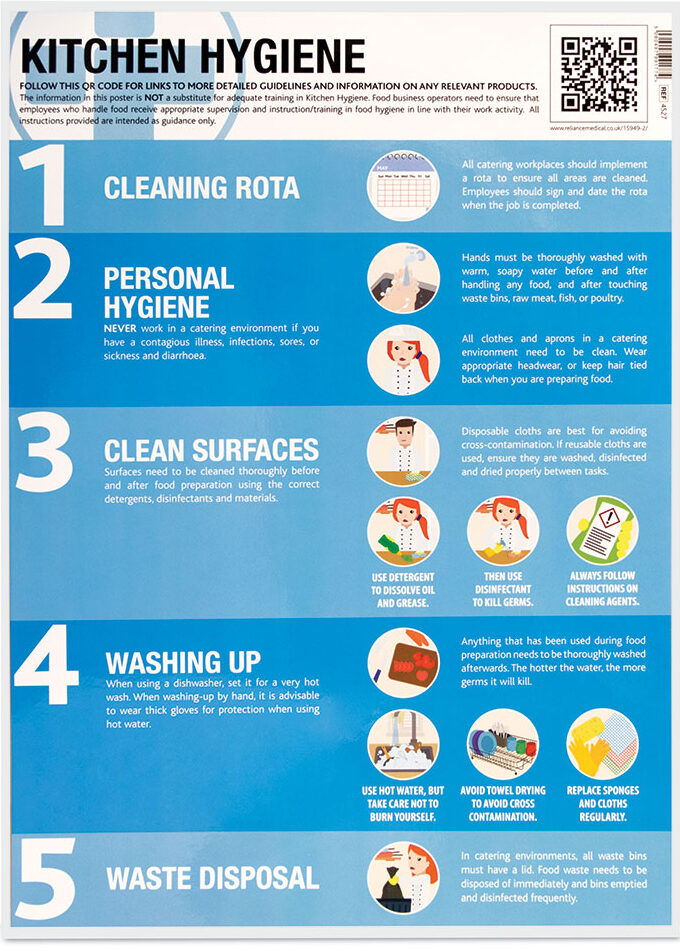Kitchen Hygiene
Additional material to support your information poster, with a quiz to test your knowledge.
Maintaining a hygienic environment is important. If food isn’t cooked, stored, or handled correctly, people can become seriously ill with food poisoning, flu, and other conditions. Luckily, it is easy to stop the spread of bacteria by ensuring you follow the instructions below.
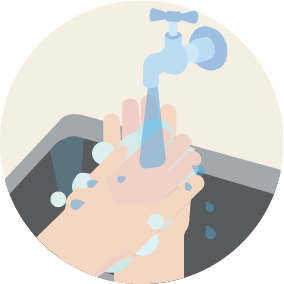
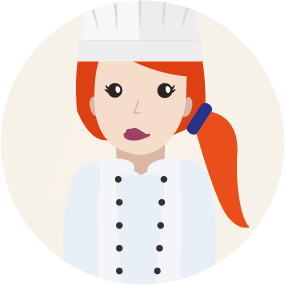
PERSONAL HYGIENE
Staff should always wash their hands thoroughly on entering the kitchen, before handling and preparing food, after touching bins, after any cleaning, or after changing a first aid dressing. For hands to be washed properly, you need warm running water, liquid soap and (preferably), disposable towels.
All staff should wear clean clothes when working with food. Ideally, they should change into clean work clothes before starting work and not wear these clothes outside food preparation areas.
Work clothes should be appropriate for staff duties and protect food from contamination. It is also good practice to wear a clean apron or disposable apron over work clothes.
Staff should change aprons after working with raw food, e.g., meat, poultry, eggs, or unwashed vegetables.
It is good practice for staff to keep their hair tied back and wear a hat when preparing food.
Staff should not wear watches or jewellery when preparing food.
Staff should not smoke, drink, eat, or chew gum while handling food. They should also avoid touching their face and nose or coughing and sneezing over or near food. If they do, they should wash their hands afterward.
Staff should be ‘fit for work’ at all times. This means that they must not be suffering from, or carrying, an illness or disease that could cause a problem with food safety. Any member of staff who has diarrhoea and/or vomiting should report it to their manager immediately and either stay at home or go home straight away, and not return to work until they have been free from symptoms for 48 hours.
Staff should tell their manager if they have any cuts or sores, and these should be completely covered with a brightly coloured blue waterproof dressing.
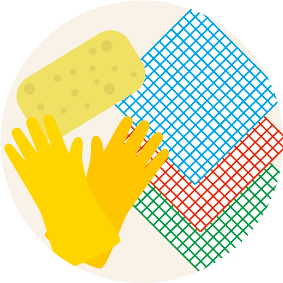

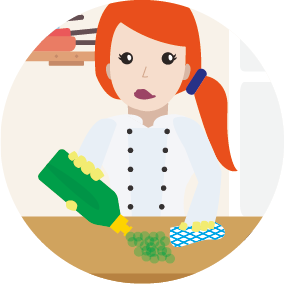
CLEANING THE KITCHEN
CLOTHS
• Use disposable cloths wherever possible and throw them away after each task.
• Always use a new or freshly cleaned and disinfected cloth to wipe work surfaces, equipment, or utensils that will be used with ready-to-eat food.
• Take away reusable cloths for thorough washing and disinfection after using them with; raw meat, raw poultry, eggs, raw vegetables, and any surfaces that have touched these foods.
• If using reusable cloths, make sure they are thoroughly washed, disinfected, and dried properly between tasks (not just when they look dirty). Ideally, wash cloths in a washing machine on a very hot cycle, such as a high temperature
wash cycle of 90°C.
• Reserve a special place in the kitchen for dirty reusable cloths before they are washed and used again. Always keep a good supply of clean cloths in the kitchen.
CLEANING
• All catering workplaces should have a cleaning rota that organises the cleaning of all areas. Once the cleaning has been done, the cleaner should sign and date the rota.
• Use cleaning and disinfection products that are suitable for the job, and follow the manufacturer’s instructions.
• Disinfection products should meet BS EN standards. Check product labels for either of these codes: BS EN 1276 or BS EN 13697.
• Disinfectants will only work on surfaces that are already clean, so cleaning needs to be carried out in two stages. First, use a cleaning product to remove visible dirt from surfaces and equipment, and then rinse. Secondly,
disinfect them using the recommended dilution and contact time for the disinfectant. Finally, rinse with fresh, clean water (if required).
• Wash work surfaces and equipment thoroughly between tasks. Follow the manufacturer’s cleaning instructions if there are any. After preparing raw food, always wash and disinfect the surfaces and equipment used.
• Regularly wash/wipe and disinfect all the items people touch frequently, such as work surfaces, sinks, taps, door handles, switches, can openers, cash registers, telephones, and scales.
• Wash and disinfect fridges regularly at a time when they do not contain much food. Before cleaning, transfer any food to another fridge or a safe cold area and keep it covered.
CLEAN AS YOU GO
• Take off outer packaging from food and throw it away before you bring food into the kitchen or storeroom.
• Take extra care of how you throw away packaging and food waste from raw food. If packaging from raw food touches work surfaces, make sure you wash and then disinfect them afterwards.
• Keep your kitchen free from clutter and rubbish. Clear away dirty kitchen equipment as soon as possible.
• Keep sinks clear and clean them regularly.
• Wash or wipe away spills as soon as they happen. Clean and then disinfect work surfaces after wiping up spills from raw food.
• Wash work surfaces thoroughly between tasks. Use a new cloth (or one that has been washed and disinfected), to clean work surfaces before preparing ready-to-eat food.
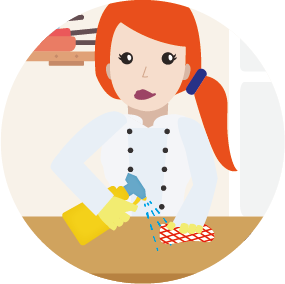
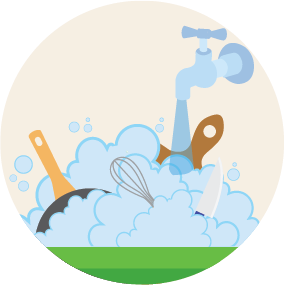
WASHING UP
• Anything that you have used in food preparation needs to be cleaned afterwards, to get rid of any harmful bacteria. The hotter the water is, the more germs it will kill.
• Ideally, use a dishwasher to clean all kitchen utensils. Do not overload the dishwasher and make sure it is maintained and serviced regularly.
• If you do not have a dishwasher, wash plates, equipment etc., in hot soapy water using diluted detergent. First, remove any grease, leftover food, and dirt, then immerse them in very hot, clean water. When washing-up
by hand, it is advisable to wear thick gloves as this will allow you to manage a hotter temperature.
• Where possible, avoid using towels to dry things, as this can also cause cross-contamination. Leave to air-dry, or dry with a clean disposable cloth.
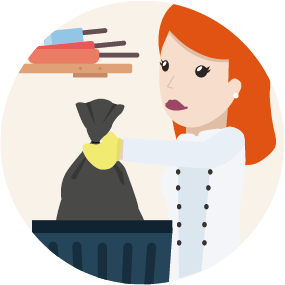
MANAGING FOOD WASTE
• Before washing crockery, equipment etc., scrape surplus food waste into a bin. Ideally, use a separate bin for food waste only.
• All waste food should be disposed of immediately.
• Use a strainer over the plughole to stop food going down the sink.
• Food waste should be stored in a specific place, away from food preparation areas, before it is collected. This area should be cleaned and disinfected regularly.
• All bins should have a lid.
• Always use bin-bags. Tie bin-bags before removing them from the bin to avoid spillages.
• Empty waste regularly into designated receptacles.
• Clean bins regularly with hot water and disinfectant them to stop bacteria multiplying.
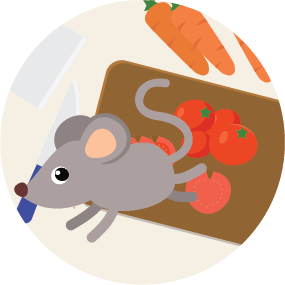
PEST CONTROL
• Check the premises regularly for pests.
• Check deliveries thoroughly for signs of pests. Do not accept a delivery if it shows signs of pests, such as gnawed packaging.
• Do NOT use an aerosol to get rid of pests in a kitchen environment; this could easily contaminate food.
• If you see any signs of a pest infestation, call a pest-control contractor immediately.
• If you think any equipment, surfaces, or utensils have been touched by pests, they should be washed, disinfected, and dried, to stop harmful bacteria from spreading.
• If you think food has been touched by pests in any way, throw it away.
Information based on the Food Standards Agency’s, “Safer Food, Better Business for Caterers.”, and “Food Hygiene, a Guide for Businesses.”
Kitchen Hygiene Quiz
A short quiz to test your knowledge of kitchen hygiene.
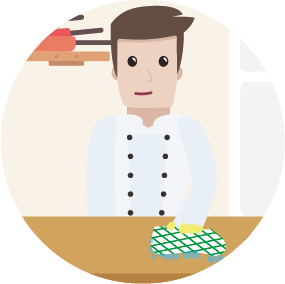
All information is for guidance only and correct at time of publication.

